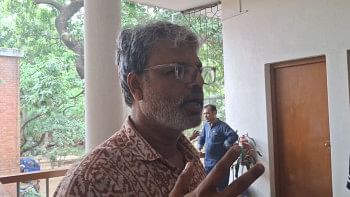Safer Internet Day: Empowering young minds for a safer digital future

There was a time when the internet was considered a luxury, but it has now become an indispensable part of modern life, shaping how we learn, communicate, and connect. However, it also has a darker side. The dual nature of the internet—as both an enabler and a disruptor—demands a deeper understanding of its impact and what it means to be a responsible digital citizen.
A study by Bangabandhu Sheikh Mujib Medical University (BSMMU) reveals the troubling reality of online spaces for children in Bangladesh. Around 33% of children aged 11 to 17 in rural areas use the internet, and of these, 59% have experienced some form of abuse. This includes receiving explicit messages or comments (21%), being exposed to explicit videos or images (17%), experiencing cyberbullying (36%), and encountering individuals with malicious intent (29%). Social platforms such as TikTok, Facebook, and various chatrooms have become common avenues for such harassment.
The misuse of the internet in Bangladesh has escalated to alarming levels of child exploitation. In 2023, the National Centre for Missing & Exploited Children (NCMEC), a US-based non-profit, received over 2 million reports of child sexual abuse material originating from Bangladesh. Shockingly, much of this material is self-generated by children as young as seven. These statistics underscore the urgent need to educate young people about the dangers that lurk in online spaces.
Equally concerning is the rise of social media addiction and the resulting inactive lifestyles, which have taken a toll on the mental and physical well-being of young people. According to BSMMU, 16% of Bangladeshi children aged 13 to 18 suffer from high blood pressure due to excessive screen time and lack of physical activity. The COVID-19 pandemic has exacerbated this issue, with 20% of adolescents reporting insomnia.
In response, parents, educators, and guardians must take proactive steps to guide children in navigating the digital world safely. Children should be taught the ethical and secure use of technology, including the importance of strong passwords, safeguarding personal information to prevent identity theft, and recognising and avoiding phishing attempts and fake websites. Teachers play a pivotal role by integrating digital safety lessons into their curriculum, raising awareness about online threats, and using practical demonstrations to make these lessons more engaging and impactful.
Promoting a healthy balance between online and offline activities is crucial. Adults should encourage children to engage in outdoor play, develop hobbies that do not involve screens, and build real-life social connections. Schools and communities can foster digital wellness by addressing issues such as cyberbullying and screen addiction through awareness programmes and support networks.
However, creating a safer digital environment is not solely the responsibility of parents and teachers. Students must also take an active role. Initiatives like GlenMarshals—volunteer students at Glenrich International School—promote digital safety, help prevent cyberbullying, guide peers on responsible social media use, and support those struggling with screen addiction. Additionally, internet service providers and tech companies must take stronger measures to block access to harmful content and ensure safer online experiences for young users.
The internet is a double-edged sword: it has the power to empower young minds and communities, yet it also presents risks that require constant vigilance. By fostering digital citizenship from an early age, we can equip future generations to use this powerful tool responsibly, creating a safer, more inclusive cyberspace.
As we observe Safer Internet Day 2025, let us commit to working "Together for a Better Internet" by bridging the gap between human values and digital spaces. Only through collective action, education, and awareness can we create an online world that is safe, supportive, and enriching for all.
Moshikur Rahman is the Head of Computer Science at Glenrich International School.

 For all latest news, follow The Daily Star's Google News channel.
For all latest news, follow The Daily Star's Google News channel. 



Comments